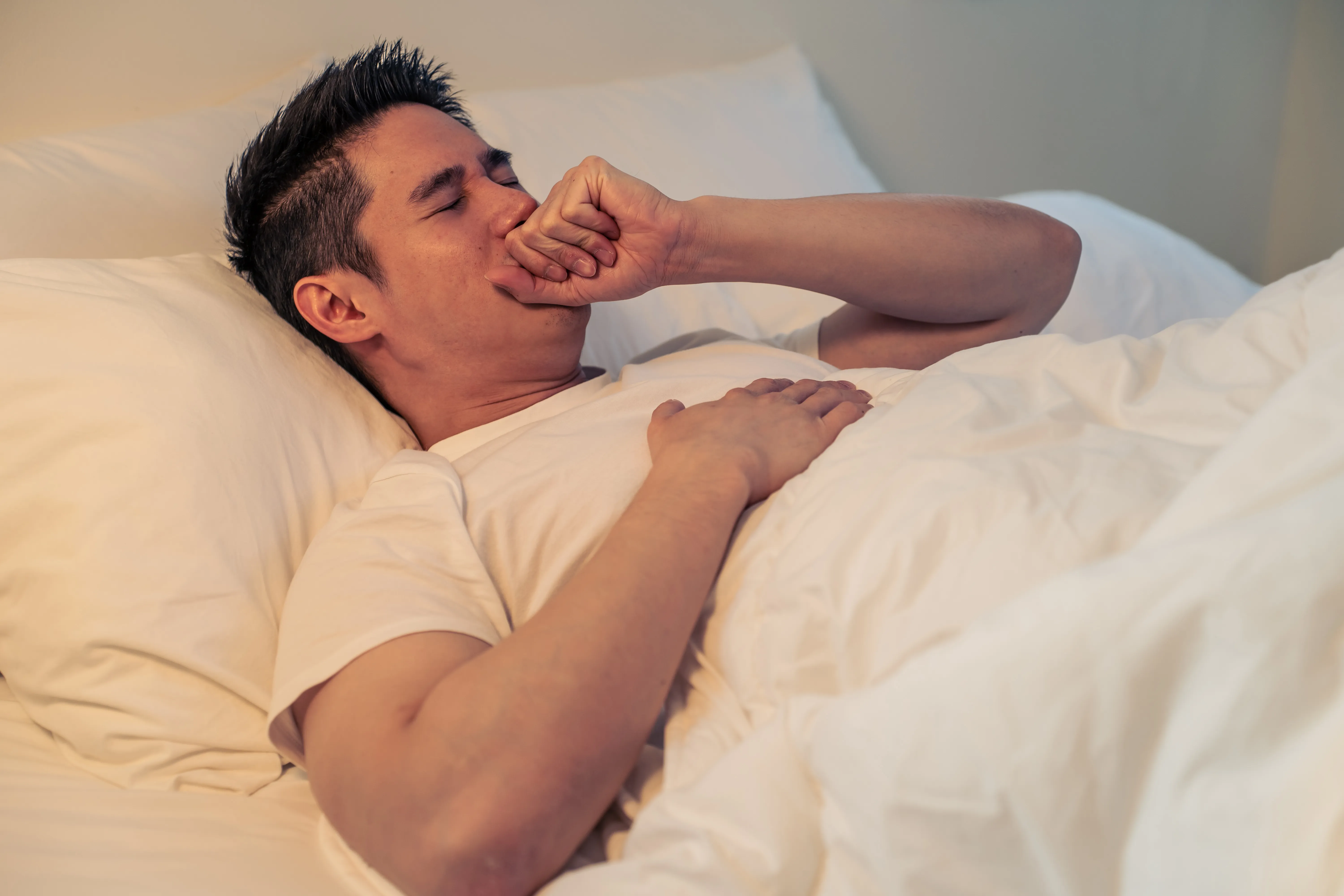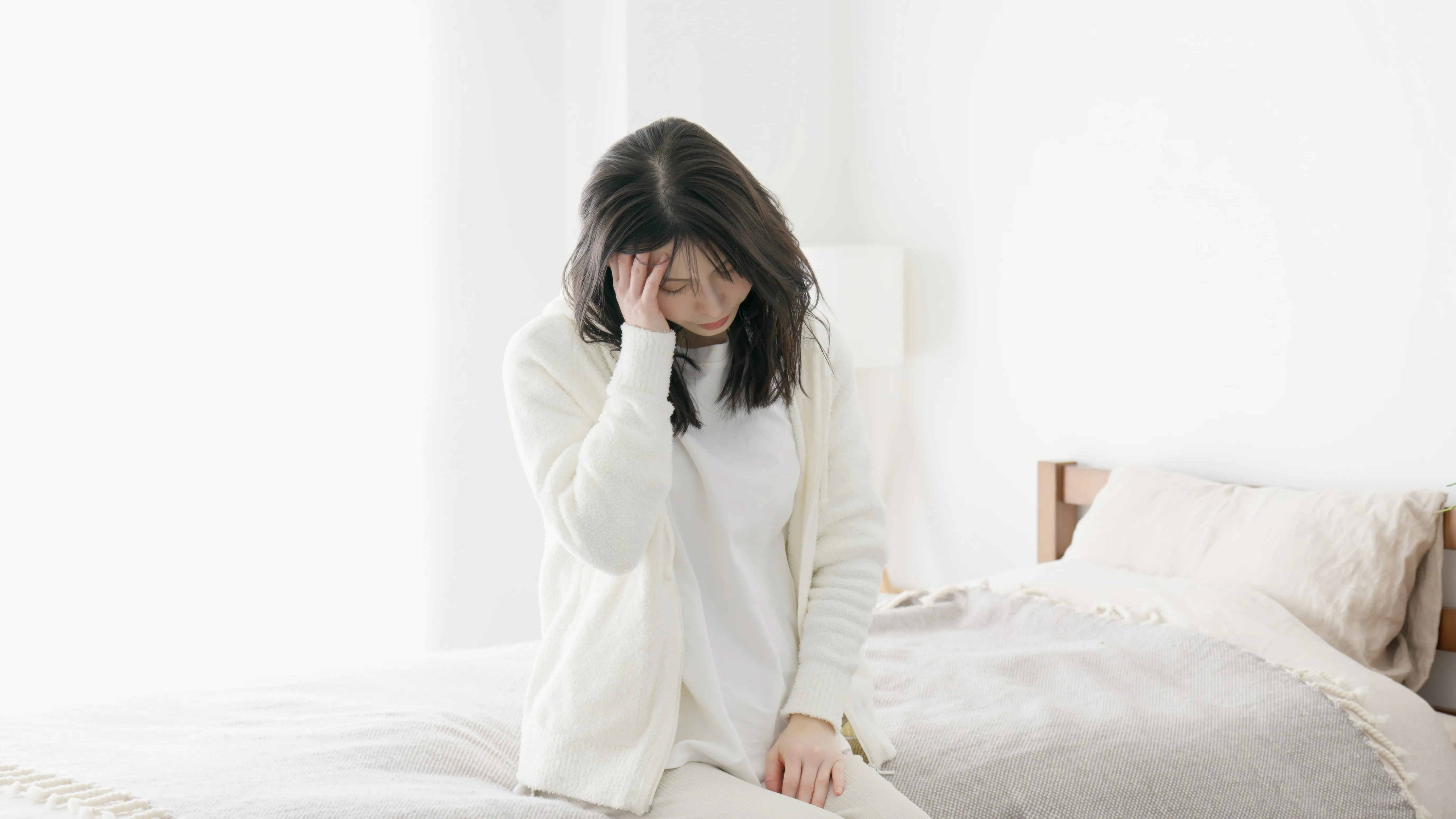Sleep apnea is a common but often undiagnosed sleep disorder that affects millions worldwide. Recognizing the symptoms early, such as loud snoring, daytime fatigue, and morning headaches, is crucial for timely diagnosis and effective management.
In this article, we’ll explore the key signs of sleep apnea to help you understand when it might be time to see a healthcare professional.
What Is Sleep Apnea?
Sleep apnea is a disorder where breathing repeatedly stops and starts during sleep. These pauses can last from a few seconds to minutes and may occur dozens or even hundreds of times per night.
Each pause often ends with a brief awakening that disrupts sleep, though most people don’t remember waking up. Over time, this interrupted sleep can lead to significant physical and mental health problems.
Types of Sleep Apnea
Understanding the different types of sleep apnea is important, as each one has its own causes and patterns. However, many of the symptoms overlap, which can make diagnosis challenging without a sleep study.
- Obstructive Sleep Apnea (OSA): This is the most common form of sleep apnea and occurs when throat muscles relax too much during sleep, causing the airway to narrow or close. It leads to pauses in breathing, often accompanied by loud snoring, choking, or gasping. Despite a full night's sleep, people with OSA often feel very tired during the day. It’s commonly linked to obesity, a narrow airway, or nasal congestion.
- Central Sleep Apnea (CSA): Unlike OSA, CSA is caused by the brain’s failure to send the right signals to the muscles responsible for breathing, not by a blocked airway. This results in periodic pauses in breathing without the typical snoring. Individuals with CSA may experience frequent nighttime awakenings and daytime fatigue, often due to underlying conditions like heart failure or neurological disorders.
- Complex Sleep Apnea: Also known as treatment-emergent central sleep apnea, this type combines features of both OSA and CSA. It usually appears when someone being treated for OSA with CPAP therapy begins to develop central apneas as well. People with complex sleep apnea often struggle with persistent tiredness and disrupted sleep despite using treatment, making it more challenging to manage.
Common Symptoms of Sleep Apnea

Sleep apnea can present itself in a range of symptoms, especially during the night. Many people aren’t aware of what’s happening while they sleep, so these signs are often noticed first by a partner or family member. Below are the most common nighttime symptoms to watch for.
Nighttime Symptoms
Sleep apnea often reveals itself most clearly during sleep, when breathing disruptions occur repeatedly throughout the night. These symptoms can significantly affect sleep quality, even if you’re unaware they’re happening.
- Loud, Persistent Snoring: One of the most recognizable signs of sleep apnea is loud and chronic snoring, especially if it occurs most nights and is disruptive to others.
- Pauses in Breathing (Apneas): These are repeated episodes where breathing stops entirely for several seconds during sleep. They may be followed by brief awakenings, often unnoticed by the sleeper.
- Gasping or Choking During Sleep: Individuals with sleep apnea may wake up suddenly, gasping for air or choking, as their body tries to restart normal breathing.
- Frequent Nighttime Awakenings: Waking up multiple times a night, whether fully or partially, is common. Many people don’t realize this is happening, but it leads to poor sleep quality.
- Restless Sleep or Tossing and Turning: Constant movement during sleep, such as shifting positions, kicking, or struggling to get comfortable, can signal breathing disruptions throughout the night.
Daytime Symptoms
The effects of sleep apnea don’t stop when the night ends. Poor-quality sleep from repeated breathing disruptions can spill over into your day, affecting your energy, focus, and mood.
- Excessive Daytime Sleepiness: Feeling unusually tired during the day, even after a full night's sleep, is one of the most common signs of sleep apnea. This can impact your work, driving, and overall quality of life.
- Morning Headaches: A lack of oxygen during sleep may lead to headaches upon waking. These headaches often improve as the day progresses.
- Difficulty Concentrating or Memory Problems: Interrupted sleep can affect cognitive function, making it harder to stay focused, remember things, or process information clearly.
- Mood Changes (Irritability, Depression): People with sleep apnea often report feeling more irritable, anxious, or even depressed. Sleep disruption affects emotional regulation and mental health.
- Dry Mouth or Sore Throat Upon Waking: Breathing through the mouth at night, common in sleep apnea, can leave you with a dry mouth or sore throat in the morning.
Overlooked or Unusual Sleep Apnea Symptoms
While some symptoms are widely recognized, others are subtle and often go unlinked with sleep apnea. These lesser-known signs can lead to misdiagnosis or delayed treatment if not recognized.
- Night Sweats: Frequent nighttime sweating, especially without a warm room or heavy blankets, may be triggered by repeated arousals from apneas.
- Acid Reflux (GERD): Sleep apnea can increase abdominal pressure during disrupted breathing, which may worsen acid reflux symptoms or cause heartburn at night.
- Decreased Libido or Erectile Dysfunction: Hormonal disruptions and chronic fatigue related to untreated sleep apnea may reduce sexual drive or performance in both men and women.
- Insomnia or Trouble Falling Asleep: Although sleep apnea is often linked to snoring and sleepiness, some individuals experience difficulty falling or staying asleep due to repeated awakenings.
- Bruxism (Teeth Grinding): Grinding teeth during sleep may be a response to airway obstruction, as the jaw tenses to keep the airway open.
- ADHD-like Symptoms in Adults: Adults with undiagnosed sleep apnea may show signs of inattentiveness, impulsivity, or restlessness, symptoms are often mistaken for adult ADHD.
Symptoms of Sleep Apnea in Children
Sleep apnea in children can look different from adults, and it's often mistaken for other developmental or behavioral issues. Recognizing these signs early can help prevent complications related to growth, learning, and overall well-being.
- Bedwetting (Enuresis): Persistent bedwetting beyond the typical age range may be linked to disrupted sleep patterns caused by breathing difficulties.
- Learning or Behavioral Problems: Children with sleep apnea may struggle with focus, memory, or impulse control in school, sometimes leading to misdiagnosis as ADHD.
- Mouth Breathing During Sleep: Breathing through the mouth instead of the nose, especially when accompanied by snoring, can be a sign of airway blockage.
- Unusual Sleeping Positions: Children may sleep with their head tilted back or neck extended as a natural attempt to open their airway and breathe more easily.
- Poor Growth or Weight Gain: Untreated sleep apnea can affect the release of growth hormones, leading to delayed growth or difficulty gaining weight in young children.
- Hyperactivity During the Day: Instead of appearing sleepy, some children with sleep apnea may be overly active or restless during the day, masking their exhaustion.
How Symptoms Can Vary by Sleep Apnea Type
While many symptoms of sleep apnea overlap, the underlying cause of each type can influence how those symptoms present. Understanding these differences can help guide more accurate diagnosis and treatment.
Symptoms of Obstructive Sleep Apnea (OSA)
In obstructive sleep apnea, the airway becomes physically blocked during sleep, often due to relaxed throat muscles or excess soft tissue. This blockage leads to loud, chronic snoring that’s usually most noticeable to a sleep partner.
People with OSA may also wake up abruptly, gasping for air or choking, as their body struggles to reopen the airway. These episodes can happen multiple times per hour, fragmenting sleep and leaving the person feeling unrested the next day. OSA is often linked to risk factors like obesity, enlarged tonsils, or sleeping on the back.
Symptoms of Central Sleep Apnea (CSA)
Unlike OSA, central sleep apnea is not caused by a physical blockage; instead, it occurs when the brain fails to send the right signals to the muscles that control breathing. Because of this, CSA often lacks the loud snoring associated with OSA.
Instead, the person may have pauses in breathing that are silent and may go unnoticed until symptoms like frequent awakenings, poor sleep quality, and shortness of breath become apparent.
People with CSA may wake up feeling like they can’t catch their breath or report insomnia despite going to bed on time. It is more commonly seen in individuals with heart problems, brainstem injuries, or those using certain medications like opioids.
Symptoms of Complex/Mixed Sleep Apnea
Complex sleep apnea, also called treatment-emergent central sleep apnea, is a hybrid form that features characteristics of both obstructive and central types. It often begins as obstructive sleep apnea and becomes more complicated when central apneas develop after starting CPAP therapy.
Patients may experience both loud snoring and episodes of breathlessness without any sound, leading to persistent sleep issues even when using prescribed treatments. This can be frustrating, as it may feel like therapy isn’t working despite full compliance.
People with complex sleep apnea often need a more customized treatment plan that addresses both physical airway obstructions and neurological signaling issues.
Risk Factors That Influence Symptom Severity

Certain factors can increase the severity and likelihood of sleep apnea symptoms. Understanding these risk factors can help identify those most vulnerable and highlight areas for prevention or intervention.
Obesity
Obesity is one of the strongest risk factors for sleep apnea. Excess fat deposits around the neck and throat can narrow the airway, making it more likely to collapse during sleep.
This added pressure can intensify breathing interruptions and worsen symptoms, particularly in individuals with a higher body mass index (BMI). Weight management often plays a crucial role in reducing sleep apnea severity.
Age and Gender
Sleep apnea becomes more common as people age, partly due to the natural loss of muscle tone in the throat and airway. Men are also more likely to develop sleep apnea than women, especially before menopause.
However, postmenopausal women’s risk rises, likely due to hormonal changes. Age and gender differences influence not only risk but also how symptoms present and progress.
Neck Circumference and Anatomy
A larger neck circumference is associated with a higher risk of airway obstruction during sleep. Individuals with thicker necks often have narrower airways, increasing the chance of blockage.
Additionally, anatomical features such as a recessed chin, enlarged tonsils, or a large tongue can contribute to airway narrowing and exacerbate symptoms.
Alcohol and Smoking
Both alcohol consumption and smoking can worsen sleep apnea symptoms. Alcohol relaxes throat muscles, increasing the likelihood of airway collapse, while smoking causes inflammation and fluid retention in the airway tissues. These effects combine to make breathing disruptions more frequent and severe, making it harder to get restful sleep.
During REM Sleep
During REM (Rapid Eye Movement) sleep, the body goes into a state of deeper muscle relaxation compared to other sleep stages. This includes the muscles around the throat and airway, which can become especially slack. For individuals with sleep apnea, this makes it easier for the airway to collapse, resulting in longer and more frequent breathing interruptions.
Because REM sleep occurs in cycles throughout the night and plays a vital role in emotional and cognitive health, these repeated disruptions can lead to more intense symptoms and poorer sleep quality overall.
While Sleeping on the Back
Sleeping on your back can significantly worsen sleep apnea symptoms due to the effects of gravity. In this position, the tongue and soft tissues in the throat tend to fall backward, narrowing or completely blocking the airway.
This increases the likelihood of snoring and breathing pauses during sleep. Many people with sleep apnea experience fewer symptoms when sleeping on their side or stomach, as these positions help keep the airway more open and reduce obstruction throughout the night.
When to See a Doctor

Recognizing when to seek medical advice is essential for early diagnosis and effective treatment of sleep apnea. If you notice warning signs or experience worsening symptoms, it’s important to get evaluated by a healthcare professional.
Signs You Should Get Tested
If you frequently experience loud, persistent snoring accompanied by choking or gasping during sleep, it’s a strong indicator that you may have sleep apnea.
Additionally, excessive daytime sleepiness, difficulty concentrating, morning headaches, or observed breathing pauses during the night are signs that warrant professional testing.
People with risk factors such as obesity, large neck circumference, or high blood pressure should also consider the evaluation, even if symptoms seem mild.
Potential Health Complications if Untreated
Untreated sleep apnea can lead to serious health problems over time. These include high blood pressure, heart disease, stroke, type 2 diabetes, and increased risk of accidents due to daytime fatigue.
Sleep apnea may also contribute to mood disorders such as depression and anxiety, significantly reducing the quality of life. Early diagnosis and treatment can help prevent these complications and improve overall health.
Managing and Treating Sleep Apnea Symptoms
Proper management and treatment of sleep apnea can dramatically improve quality of life and reduce health risks. Treatment plans often combine lifestyle changes with medical interventions tailored to the severity and type of sleep apnea.
Lifestyle Changes
Simple lifestyle adjustments can have a significant impact on reducing sleep apnea symptoms. These changes focus on improving airway health and minimizing factors that contribute to breathing interruptions during sleep.
- Weight Management: Maintaining a healthy weight is one of the most effective ways to reduce sleep apnea symptoms, especially in cases related to obesity. Even modest weight loss can decrease fat deposits around the airway and improve breathing during sleep.
- Avoiding Alcohol and Sedatives Before Bed: Alcohol and sedatives relax the throat muscles, increasing the risk of airway collapse and worsening apnea episodes. Avoiding these substances in the hours before bedtime can help reduce symptom severity.
- Sleeping Position Adjustments: Sleeping on your side rather than your back can prevent the tongue and soft tissues from blocking the airway. Using special pillows or positional therapy devices can assist in maintaining a side-sleeping posture throughout the night.
Medical Treatments
When lifestyle changes aren’t enough, medical treatments provide effective options to manage sleep apnea. These range from devices that keep the airway open during sleep to surgical interventions for more severe cases.
- Continuous Positive Airway Pressure (CPAP) Therapy: CPAP is the most common and effective treatment for moderate to severe obstructive sleep apnea. It delivers a steady stream of air through a mask to keep the airway open during sleep, reducing apneas and improving sleep quality.
- Oral Appliances: For mild to moderate sleep apnea, dental devices designed to reposition the jaw and tongue can help keep the airway open. These appliances are custom-fitted by a dentist or orthodontist and are a good alternative for those who cannot tolerate CPAP.
- Surgery: In some cases, surgery may be recommended to remove or reduce tissue blocking the airway, correct structural abnormalities, or address enlarged tonsils or adenoids. Individual anatomy and the severity of sleep apnea determine the surgical options, which are generally considered after trying other treatments.
FAQs
What Are The Most Common Symptoms Of Sleep Apnea?
The most common symptoms include loud snoring, pauses in breathing during sleep, excessive daytime sleepiness, morning headaches, difficulty concentrating, and mood changes.
Can Sleep Apnea Cause Morning Headaches?
Yes, sleep apnea can lead to morning headaches due to reduced oxygen levels and poor sleep quality caused by repeated breathing interruptions during the night.
Is Snoring Always A Sign Of Sleep Apnea?
Not always. While loud snoring is a common symptom of sleep apnea, some people snore without having the condition. However, snoring accompanied by breathing pauses or gasping should be evaluated.
When Should I See A Doctor About Sleep Apnea Symptoms?
You should see a doctor if you experience loud snoring with breathing pauses, excessive daytime tiredness, morning headaches, or if you have risk factors like obesity or high blood pressure.
Conclusion
Sleep apnea is a serious but treatable condition that affects millions worldwide. Recognizing its symptoms early and seeking appropriate evaluation can prevent complications and improve quality of life through effective management and treatment.
Jessica H.
Jessica is a reviewer, writer, and sleep enthusiast at Sleepiverse. Jessica graduated with her master's degree in Nursing research and education. She is a registered nurse and currently works in the Intensive Care Unit. Since becoming a nurse, Jessica has worked the night shift, which means a disrupted sleep schedule. Knowing she needed to function at her best while caring for patients at night, she spent a lot of time researching how to sleep well with a difficult schedule.


